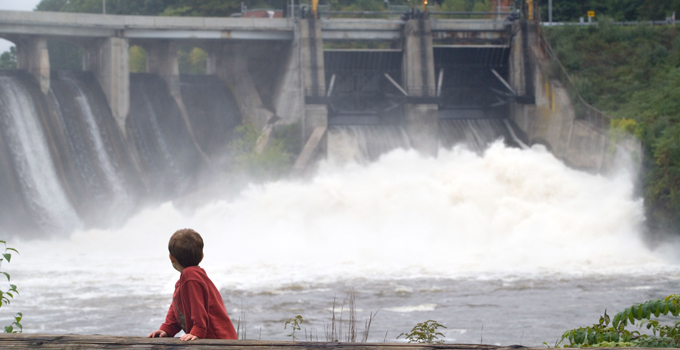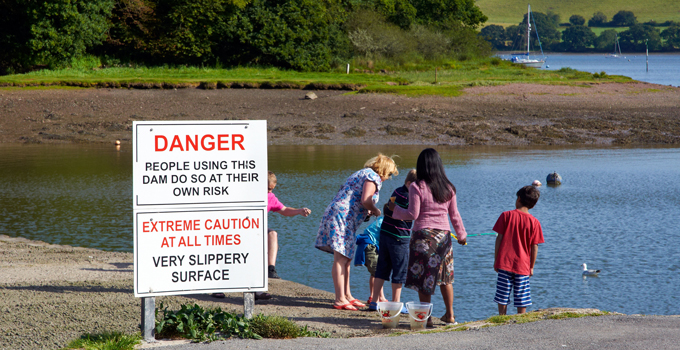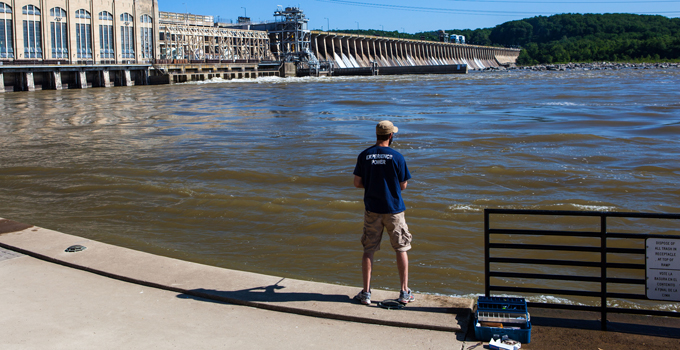THOUGHT LEADERSHIP
Keeping safe around dams
When we hear ‘dam’ and ‘safety’ in the same sentence, it’s natural to think first of catastrophic dam failures and their devastating impacts on downstream communities. However, keeping the public safe around dams also involves considering and mitigating some more common and less documented risks…

Dams, water courses and water bodies typically offer a range of recreational benefits enjoyed by many. But where there’s water, there’s inherent danger, including the risk of drowning.
Asset managers know much more about the numbers of fatalities relating to dam failures than about the fatalities associated with the overall ongoing presence and operation of dams. But we do know that drownings in dams and waterways make up more than a third of total drowning statistics in Australia, and the situation is similar around the world.
Regardless of the specific circumstances of each of these fatalities, it is clear that owners and regulators of dams and water courses need to take action to help protect the public from these largely avoidable deaths.
In 2012 the International Committee on Large Dams established a working committee to start identifying these public safety risks, describe the international state of practice to manage and mitigate the risks, and develop a guidance bulletin on best practice measures and public education about safety around dams. This project is well underway, and here I’ll take a look at some of the key risks and possible mitigations being considered.
WHAT ARE THE RISKS?
The general public tends to underestimate the hazards linked to activities around dams and waterways, particularly the possibility and effects of sudden changes in water level and flow.
Accidents may happen around dams and water bodies during a range of activities – not only those considered more overtly dangerous (such as abseiling or rock climbing), but also during activities such as swimming, kayaking, boating or fishing. Falls from heights and other activities not associated with access to water are also of concern.
However, many drownings are due to the particular risks relating to hydraulic structures and the inherent nature of their operation, and to rapid changes in water levels and conditions.
Hazards around dams are often associated with swift and turbulent currents near intakes and spillways. These currents may be created by the changes in flows and water levels during normal operations of spillways or during flooding. Unexpected rapidly rising water levels can result from weather conditions, but also from sudden changes in output from hydropower stations, and have the potential to cause people to be inundated or swept away.
Around the world, a large proportion of drownings have been associated with a particular subset of hydraulic structures referred to as ‘low-head weirs’. Under certain flow conditions, these can display a particularly dangerous hydraulic phenomenon, earning them a common description as ‘drowning machines’. This type of structure has particularly attracted attention, and has been investigated, in the United States as it constitutes a large proportion of preventable death in a number of states.
WHAT CAN DAM OWNERS DO?
Where people are undertaking recreational activities with a recognised level of risk, there is an implied responsibility to observe regulations and warnings, take common safety precautions, and be capable and in a suitable state to undertake the activity.

However, the absence of such behaviours does not remove the liability of the asset owner or manager. In fact, their responsibility is even higher in inherently hazardous site conditions, conditions posing a hazard that is not readily identifiable, or where changes in operations lead to changes in the hazard level.
So, what actions should a dam owner or manager take to best protect the public? While not all incidents can be avoided, the possible actions below form a comprehensive approach to minimising risk and reducing probability and consequences.
| Develop a public safety policy and plans, ensuring compliance with laws and regulations |
Start by documenting your commitment to public safety in a policy statement identifying your statutory and legal requirements, and establishing your objectives, tolerance criteria and targets. Translate your policy into a public safety management plan indicating how you will manage the public safety risk at each site. This should be based on a risk assessment of the facility, identifying the hazards, assessing the degree to which the public is exposed, identifying appropriate control measures and assigning responsibilities. |
| Conduct a risk assessment, incorporating comprehensive local insight and regular review |
The risk assessment process is an important step in managing public safety risk as well as complying with statutory and common law obligations. It helps focus on the risks that really matter. Most organisations have an accepted method for analysing, assessing and managing risk; this may be tailored to incorporate public safety risks. Consider such factors as seasonal and daily weather effects. For example, during summer, or other periods of low flow, the public may anticipate a lower likelihood of rapidly changing conditions. There may also be a general lack of awareness that spills can result from other factors than adverse weather, such as changes in generation or earlier precipitation upstream. The quality of the risk assessment and the effectiveness of control measures depend on the degree of site-specific knowledge which is best obtained from staff working at the location or engaged in its operation. The risk assessment should be periodically reviewed to ensure the assumptions remain valid. |
| Exclude the public where necessary through fencing, gates, artificial and natural barriers |
The selection of exclusion devices and layout depends on the particular site and requires input from people with a good local understanding. Note that the effectiveness of public exclusions can vary over time as usage of an area changes or as the public becomes complacent or desensitised to the hazards. |
|
Warn the public of dangers and of changed conditions through signage and other audible and visual alarms
|
Signage and alarms warn of changes in operations (e.g. gate opening) and conditions (e.g. water level or flow). Carefully consider their placement, maintenance, language, readability, and use of terms and symbols. In some circumstances, audible and visual alarms may be appropriate. As with physical barriers, over time the effectiveness of warnings may diminish, particularly if there is a real or perceived lack of connection between the activation of the warning and the occurrence of the hazard. |
|
Educate targeted populations and the general public
|
Best practice suggests that education applied well either via mass media or to targeted populations can have a significant impact. |
| Train supervisory personnel, including in intervention and rescue techniques and incident management |
Training supervisory personnel in hazard identification, risk assessment, compliance assessment and enforcement is important. This can include specific training and simulations in intervention and rescue techniques where appropriate. Many dam owners are reducing the site presence needed to meet operational requirements; but determining the appropriate presence required should take account of the need to maintain a public profile and awareness of public interaction. Periodic patrols are also valuable to identify changed patterns of public use. A public safety incident may be managed by local intervention or could escalate into an emergency, crisis or disaster for an operator depending on the nature and scale of the incident. Effective incident management must go beyond the immediate need to contain the incident (e.g. perform a rescue), by also considering the implications for risk assessment, education, and the return to business operations. |
| Decommission the dam where appropriate | In some circumstances, decommissioning may be an appropriate method to reduce risk. Public safety may add weight to a decision based on other business or operational considerations. |
| Monitor, report and review |
Incident reporting relating to public safety around dams is often poorly undertaken and lacking sufficient detail. There are also very few reports of near misses, which can provide important lessons about mitigating risks, and very limited databases or documented case studies available. To improve this situation, the forthcoming guideline from the ICOLD committee will propose an incident reporting process that can be applied by owners and regulators to improve their practices regarding public safety around dams. |
The ICOLD bulletin will form a valuable tool for owners, operators and regulators to manage and mitigate this significant risk area. A good way to start the process is by seeking the assistance of others who have experience in assessing and managing the public interaction with dam and waterway assets.
Every life lost in a dam-related accident is a tragedy. Through these best practice measures, dam owners and managers have a much greater opportunity to help reduce the many hundreds of dam-related fatalities occurring around the world each year.
If you would like to find out more about how Entura can help you improve safety around dams, please contact Phillip Ellerton on +61 439 010 172 or Shekhar Prince on +61 412 402 110.
MORE THOUGHT LEADERSHIP ARTICLES
5 July, 2017







